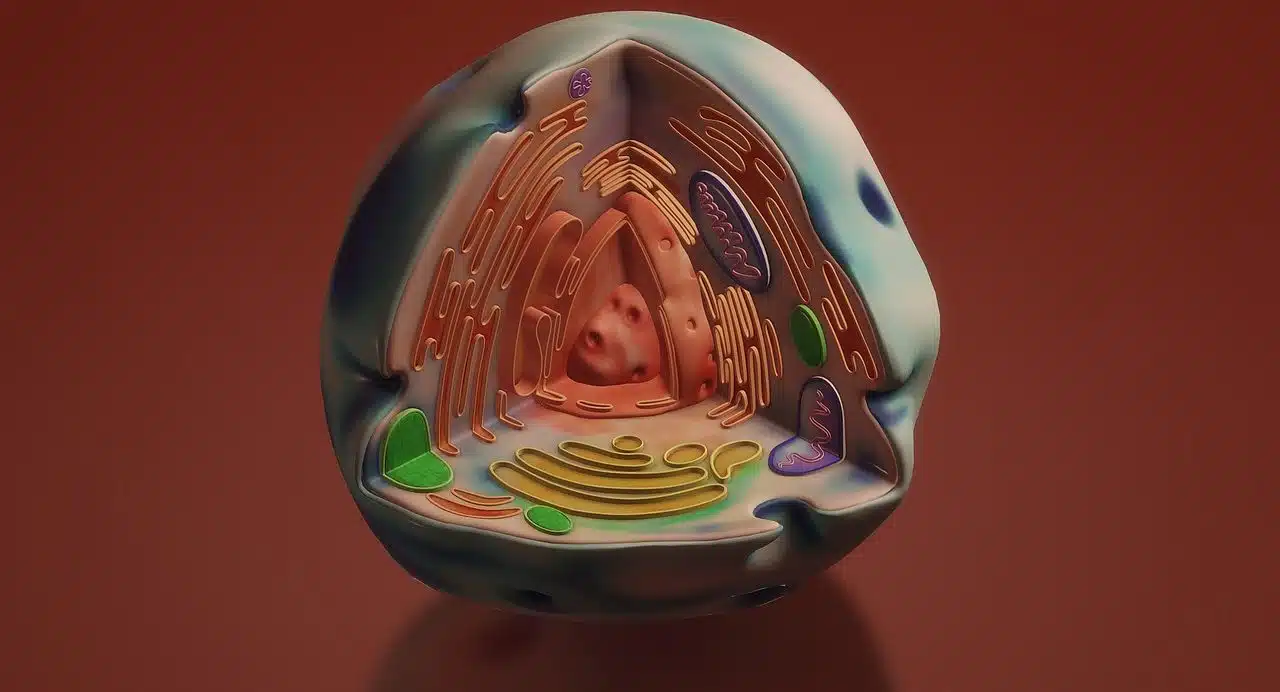
The cell nucleus houses the genetic material.
The cell nucleus is the portion of eukaryotic cells that houses most of the genetic material . This genetic material is arranged in deoxyribonucleic acid molecules that form complexes with multiple types of proteins and which, in turn, make up chromosomes .
It should be noted that nucleus , from the Latin nucleus , is a concept with multiple meanings. In general, it can be indicated that the core is the most important element of something that, when other elements are added or added, ends up forming a whole. That is why the core can be considered the center or essence of an entity.
Cellular , on the other hand, is that which belongs to or is related to cells . It should be remembered that a cell is the essential unit of every living being , and that it has the ability to reproduce independently of other elements.
What is the cell nucleus
The cell nucleus, then, is a membranous structure that has the function of exercising control over the activities of the cells and preserving the integrity of the genes . It is made up of the nuclear envelope (a double membrane that surrounds the organelle and keeps its contents isolated from the cytoplasm) and various subnuclear bodies, which house different types of components, such as molecules, proteins and specific fragments of the chromosomes.
This nuclear envelope is porous : in this way, the genetic material can pass through the membrane, which causes the maintenance of the chromosomes to take place.
The entry and exit of molecules from the cell nucleus, however, is a highly complex process. While smaller molecules enter the nucleus without regulation, RNA and proteins can only enter by establishing an association with karyopherins .

The nucleus is the most important part of a neuron.
History of its discovery
The cell nucleus was the first organelle discovered by science . Such is its age that it is believed that the first drawing that depicts it dates back to the end of the 17th century , by Anton van Leeuwenhoek , a scientist of Dutch origin who is among the first to have made relevant observations through the microscope.
Anton van Leeuwenhoek noticed a gap while looking at salmon red blood cells; It is worth mentioning that the red blood cells of all vertebrates except mammals have a nucleus. Later, both the microscopist and naturalist Franz Andreas Bauer , originally from the Czech Republic , and the researcher Robert Brown , originally from Scotland , noticed the existence of the cell nucleus on different occasions. The latter was carrying out a study with orchids at the beginning of the 19th century when he noticed the presence of an opaque area in the external cells, which he called the nucleus or areola; His work, however, does not suggest a function for the nucleus, but merely points out its existence.
The function of the cell nucleus
Already in 1838 , the German botanist Matthias Jakob Schleiden proposed that the role of the cell nucleus was to generate or build cells, which is why he called it the cytoblast . His observation was supported by the fact that around said stem cells he had noticed the presence of new cells. Franz Julius Ferdinand Meyen , German doctor and botanist, strongly opposed these ideas, on the grounds that many cells did not have a nucleus and that their multiplication was carried out by division .
Opposing and complementary visions did not stop appearing throughout the decades. Oscar Hertwig , a zoologist also from Germany , was the first to suggest that the development of an individual occurred from only a nucleated cell, following his studies on the fertilization of the sea urchin.
